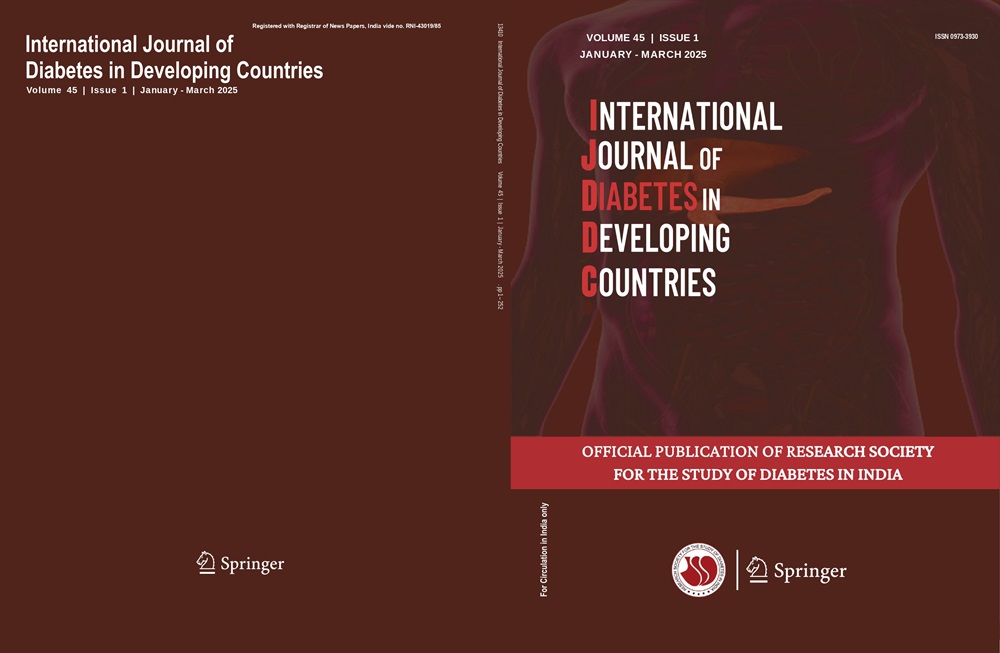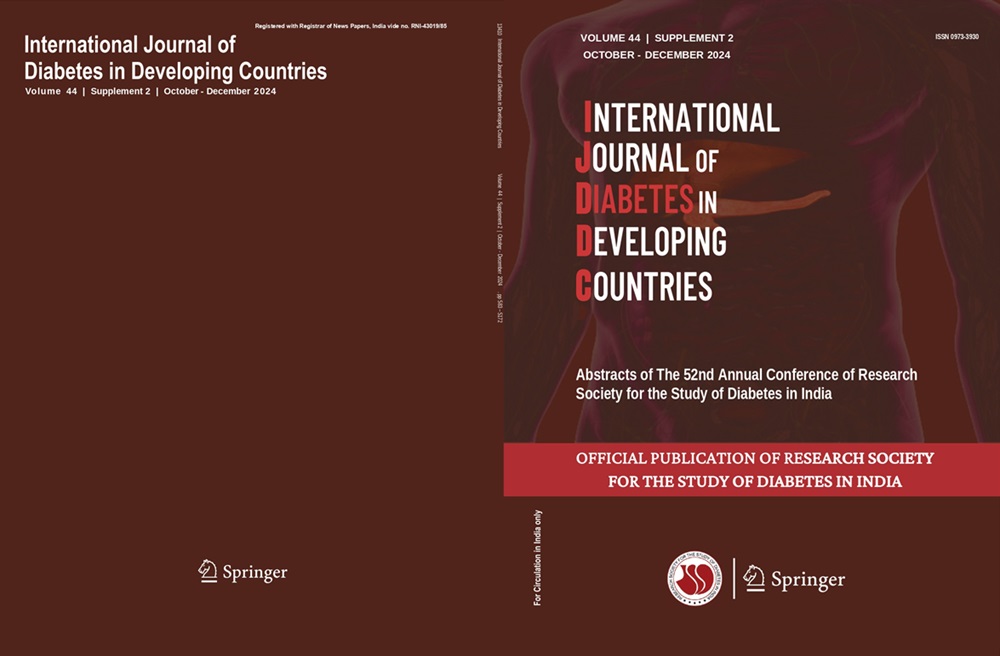Shambo S. Samajdar, Shashank R. Joshi, Sougata Sarkar, Santanu K. Tripathi, Satyabrata Sahoo, Nandini Chatterjee, Jyotirmoy Pal, Rutul A. Gokalani
Keywords
Insulin • Oral antidiabetic failure • Type 2 diabetes • Insulin glargine • Oral antidiabetic • Metformin
Abstract
Background Type 2 diabetes is a significant public health concern that affects over 537 million adults worldwide. Oral antidiabetic (OAD) failure can be a complex management issue in patients with type 2 diabetes. Insulin glargine U-300 is a newer type of basal insulin with more consistent pharmacological effects than traditional insulin glargine.
Objective This study aimed to assess the safety and effectiveness of insulin glargine U-300 as compared to insulin glargine U-100 in Indian type 2 diabetes patients who had experienced OAD failure.
Methods This is a record-based observational study conducted on type 2 diabetes patients who had experienced OAD failure.
Results The study involved 389 cases (189 on insulin glargine U-300 and 200 on insulin glargine U-100). It was found that 56.6% and 58.1% of patients had reduced fasting glucose levels below 130 mg/dl after 1 month of treatment, and 78.8% and 76.1% had a reduction after 3 months following the use of insulin glargine U-300 and insulin glargine U-100, respectively. In patients on glargine U-300 and insulin glargine U-100, the mean fasting plasma glucose decreased from 241.05 ± 65.93 mg/dl at baseline to 142.61 ± 55.19 mg/dl (p < 0.05) and similarly from 250.68 ± 61.41 to 140.27 ± 48.29 mg/dl (p < 0.05) at the end of the first month, respectively. The incidence of hypoglycemia was comparatively fewer in patients using insulin glargine U-300 as compared to those using insulin glargine U-100 (8.1% vs. 6.7%, p < 0.05).
Conclusion The results suggest that insulin glargine U-300 is an effective and safer treatment option than insulin glargine U-100 for Indian patients with OAD failure. These findings have the potential to improve the management of type 2 diabetes patients with OAD failure globally




